 |
Slovak Arachnological Society |
|
Palpigradi (microwhip scorpions) |
|
|
Araneae • Opiliones • Pseudoscorpiones • Palpigradi • Schizomida • Acari |
|
 |
Slovak Arachnological Society |
|
Palpigradi (microwhip scorpions) |
|
|
Araneae • Opiliones • Pseudoscorpiones • Palpigradi • Schizomida • Acari |
|
Checklist
![]()
The fauna of microwhip scorpions in Slovakia comprises of 2 species (one of them known only from heated glasshouses). Faunistic data are diffused in 8 papers, the whole bibliography counts 20 papers.
| order Palpigradi Thorell, 1888 | |||
| family Eukoeneniidae Petrunkevitch, 1955 | |||
|
|
Eukoenenia florenciae (Rucker, 1903) |
|
|
|
|
Eukoenenia spelaea (Peyerimhoff, 1902) |
|
|
|
Eukoenenia spelaea |
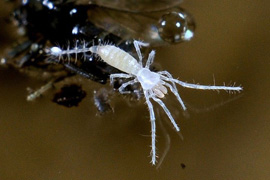 |
In Slovakia, Eukoenenia spelaea was found in 4 caves in Slovak Karst, one cave in Čierna hora Mts., one cave in Low Tatras Mts., and two caves in Kozie chrbty Mts. (map). The first finding came from Ardovská Cave in Slovak Karst (Kováč 1999). The Demänová Cave system (Low Tatras), Zápoľná and Važecká Caves (Kozie chrbty Mts.) are the northernmost known localities for entire Palpigradida group (latitude of roughly 49° N). The discovery of these animals in these caves confirms the hypothesis that Pleistocene mountain glaciation in Central Europe did not completely extinguish local subterranean fauna. |
Totally, four subspecies of Eukoenenia spelaea were described: Eukoenenia spelaea spelaea (Peyerimhoff, 1902) (France), Eukoenenia spelaea hauseri Condé, 1974 (Croatia), Eukoenenia spelaea strouhali Condé, 1972 (Austria) and Eukoenenia spelaea vagvoelgyii Szalay, 1956 (Hungary). The situation is, however, complicated because two subspecies were described based on one adult specimen only. Moreover, two closely related species of the genus from the Carpathians in Romania (Eukoenenia condei, Eukoenenia margaretae) were described using doubful criteria (Orghidan et al. 1982). The subspecies status of Eukoenenia spelaea is unclear and material apparently needs taxonomic revision (Kováč 1999). Palpigradida belonging to Eukoenenia spelaea should therefore be considered as Eukoenenia spelaea-complex (Condé pers. comm.).
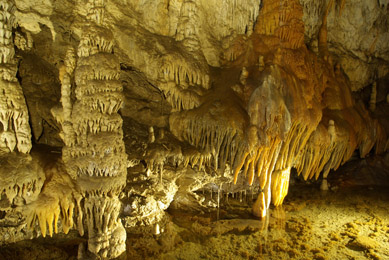 |
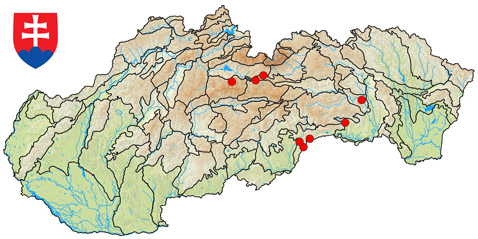 | |
Demänová Cave system,
|
Occurence of Eukoenenia spelaea in Slovakia |
|
Eukoenenia florenciae |
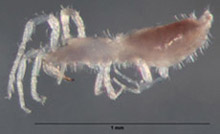
|
In Slovakia, Eukoenenia florenciae occurs in the Botanical Garden of the Comenius University in Bratislava Christian & Christophoryová (2013). There were three findings from June to December 2012 in heated greenhouses (with a temperature of about 26 °C), in the soil and under stones. In Central Europe, E. florenciae appears incapable of establishing populations under the open sky. The occurrence in Bratislava marks the second locality of E. florenciae in Europe: One hundred years ago, E. florenciae population was found in the greenhouses of the Paris Natural History Museum (Condé 1981). |
The native range of this species is still unknown. Eukoenenia florenciae has achieved the widest distribution of any palpigrade species through human agency. Species was decribed from the soil of a cedar hedge in Bonham, northeastern Texas. Apart from the USA (Texas, Louisiana, Hawaii), the species has been recorded from Colombia, Paraguay, Argentina, Australia, Nepal, and France (Barranco & Harvey 2008). Additionally, Condé (1981) referred all non-Mexican records published as E. hanseni to E. florenciae: Bermuda, Réunion, Egypt, Morocco, Madagascar, and Mauritius (Harvey 2003). Not a single male of E. florenciae has been detected so far (Christian & Christophoryová 2013).
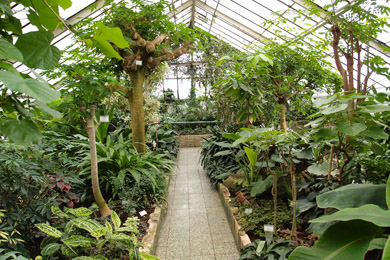 |
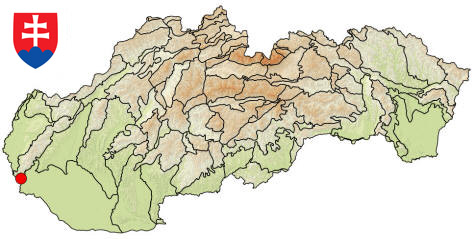 | |
Glasshouse in the Botanical garden in Bratislava,
|
Occurence of Eukoenenia florenciae in Slovakia |
|
|
 Editor:
Peter Fenďa & Ľubomír Kováč Editor:
Peter Fenďa & Ľubomír Kováč |
| Last updated: 16th November 2018 |
|
|